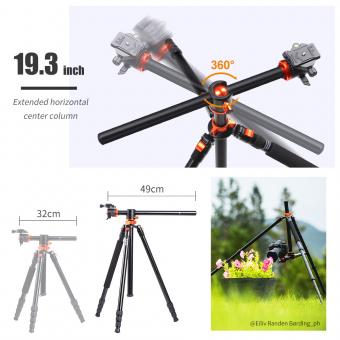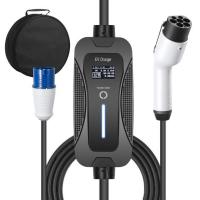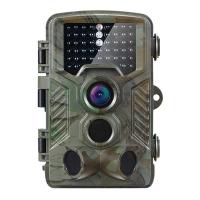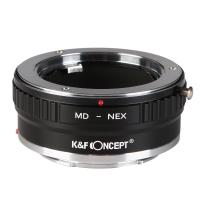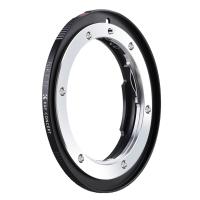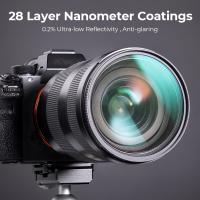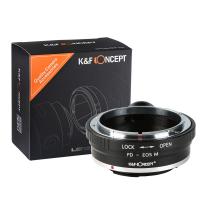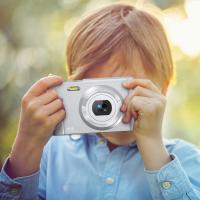How To Choose A Digital Camera ?
When choosing a digital camera, there are several factors to consider. First, determine your budget and what type of photography you will be doing. If you are a beginner, a point-and-shoot camera may be sufficient, but if you are more experienced, a DSLR or mirrorless camera may be a better option.
Consider the camera's sensor size, resolution, and ISO range for image quality. Look for features such as image stabilization, autofocus, and burst mode for action shots. Consider the lens options available for the camera and whether they meet your needs.
Other factors to consider include the camera's size and weight, battery life, and connectivity options such as Wi-Fi and Bluetooth. Read reviews and compare specifications to find the best camera for your needs.
1、 Sensor size and type
How to choose a digital camera? One of the most important factors to consider is the sensor size and type. The sensor is the part of the camera that captures the image and determines the quality of the photo. A larger sensor size generally means better image quality, especially in low light conditions.
There are two main types of sensors: CCD and CMOS. CCD sensors are known for producing high-quality images with low noise, but they consume more power and are slower than CMOS sensors. CMOS sensors, on the other hand, are faster and consume less power, but they may produce more noise in low light conditions.
In recent years, there has been a trend towards larger sensors in digital cameras. Full-frame sensors, which are the same size as a 35mm film frame, are becoming more common in high-end cameras. These sensors offer the best image quality and low light performance, but they also come with a higher price tag.
Another factor to consider is the crop factor, which affects the effective focal length of the lens. Cameras with smaller sensors have a higher crop factor, which means that the lens appears to be more zoomed in than it would on a camera with a larger sensor. This can be an advantage for telephoto photography, but a disadvantage for wide-angle shots.
In conclusion, when choosing a digital camera, it's important to consider the sensor size and type. A larger sensor generally means better image quality, but also comes with a higher price tag. The latest trend is towards full-frame sensors, which offer the best image quality and low light performance.
2、 Megapixels and image quality
How to choose a digital camera? There are several factors to consider, but one of the most important is megapixels and image quality. Megapixels refer to the number of pixels in an image, and generally, the more megapixels a camera has, the higher the image quality will be. However, it's important to note that megapixels aren't the only factor that determines image quality.
When choosing a digital camera, it's important to consider your needs and how you plan to use the camera. If you're a professional photographer or plan to print large images, you may want a camera with a higher megapixel count. However, if you're just taking photos for social media or personal use, a lower megapixel count may be sufficient.
In addition to megapixels, other factors that affect image quality include the camera's sensor size, lens quality, and image processing capabilities. It's also important to consider the camera's features, such as manual controls, autofocus, and image stabilization.
The latest point of view on megapixels and image quality is that while higher megapixels can result in higher resolution images, it's not always necessary for most users. Many modern cameras with lower megapixel counts can still produce high-quality images thanks to advancements in sensor technology and image processing.
Ultimately, when choosing a digital camera, it's important to consider your needs and budget, and to do your research to find a camera that meets your requirements for image quality, features, and usability.
3、 Lens options and compatibility
Lens options and compatibility are crucial factors to consider when choosing a digital camera. The lens is the most important part of a camera as it determines the quality of the image. Therefore, it is essential to choose a camera that offers a wide range of lens options and is compatible with different types of lenses.
When selecting a camera, it is important to consider the type of photography you will be doing. If you are interested in landscape photography, you may want to choose a camera with a wide-angle lens. On the other hand, if you are interested in portrait photography, you may want to choose a camera with a telephoto lens.
Another important factor to consider is the compatibility of the camera with different types of lenses. Some cameras are only compatible with lenses from the same manufacturer, while others can use lenses from different manufacturers. It is important to choose a camera that is compatible with a wide range of lenses to give you more flexibility in your photography.
In recent years, mirrorless cameras have become increasingly popular due to their compact size and versatility. These cameras offer a wide range of lens options and are compatible with different types of lenses. They also offer advanced features such as autofocus and image stabilization, making them a great choice for both amateur and professional photographers.
In conclusion, when choosing a digital camera, it is important to consider the lens options and compatibility. A camera with a wide range of lens options and compatibility with different types of lenses will give you more flexibility in your photography and allow you to capture high-quality images.
4、 Shooting modes and features
How to choose a digital camera? One of the most important factors to consider is the shooting modes and features that the camera offers. These modes and features can greatly enhance your photography experience and help you capture stunning images.
When looking for a digital camera, consider the shooting modes that are available. Most cameras offer automatic modes, which are great for beginners or those who want to quickly capture a shot without worrying about settings. However, more advanced cameras also offer manual modes, which allow you to have complete control over settings such as aperture, shutter speed, and ISO.
Another important feature to consider is image stabilization. This feature helps to reduce camera shake and produce sharper images, especially in low light situations. Some cameras offer in-body stabilization, while others have it built into the lens.
Other features to consider include the camera's autofocus system, burst mode, and video capabilities. The autofocus system should be fast and accurate, while burst mode allows you to capture multiple shots in quick succession. Video capabilities should also be considered if you plan on using your camera for vlogging or recording videos.
In terms of the latest point of view, many cameras now offer advanced features such as Wi-Fi connectivity, touchscreens, and even artificial intelligence. Wi-Fi connectivity allows you to easily transfer images to your phone or computer, while touchscreens make it easier to navigate menus and adjust settings. Artificial intelligence features can help to automatically adjust settings based on the scene you are shooting, making it easier to capture great shots.
Overall, when choosing a digital camera, consider the shooting modes and features that are important to you and your photography needs. With so many options available, there is sure to be a camera that meets your needs and helps you capture stunning images.











